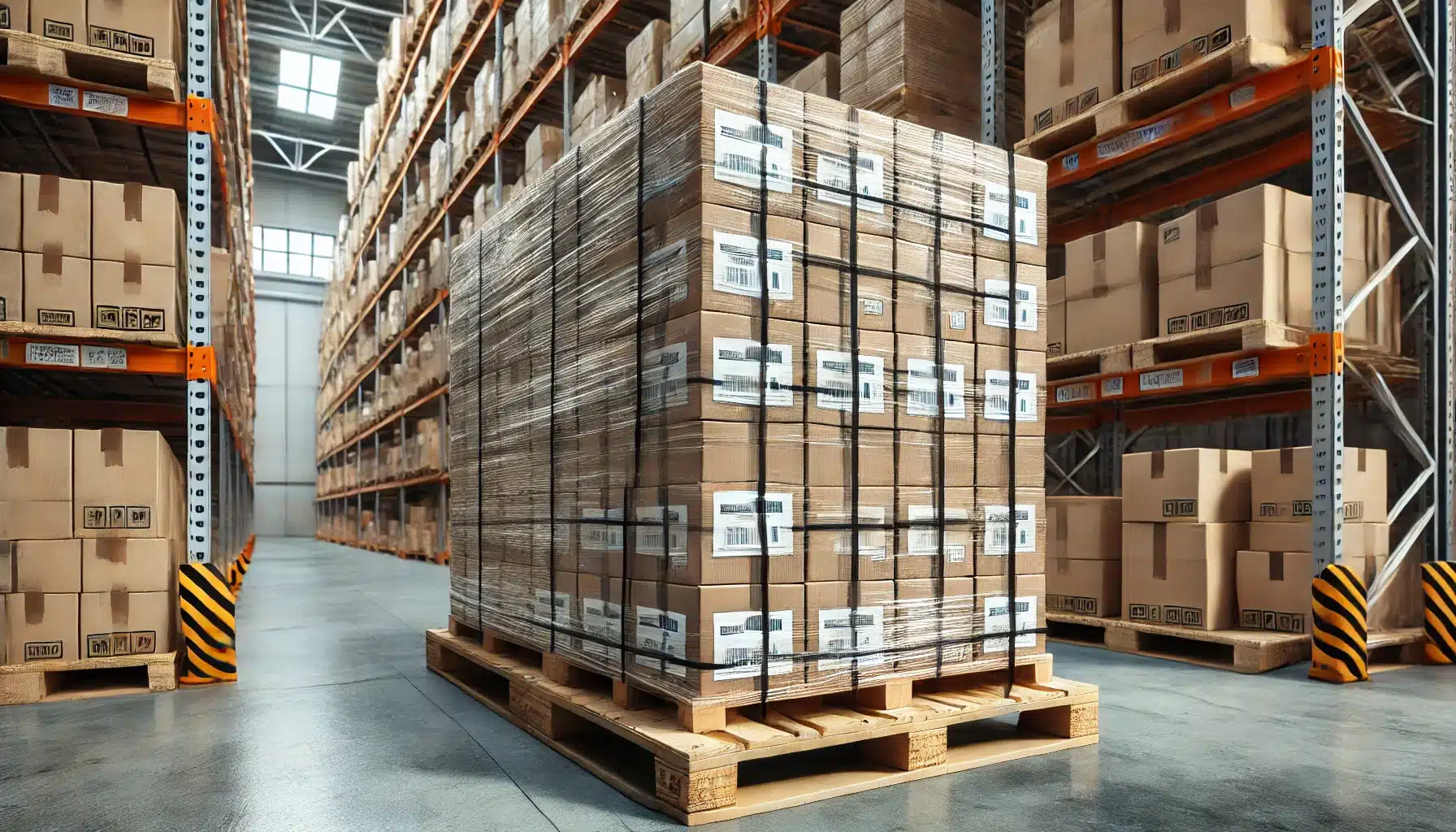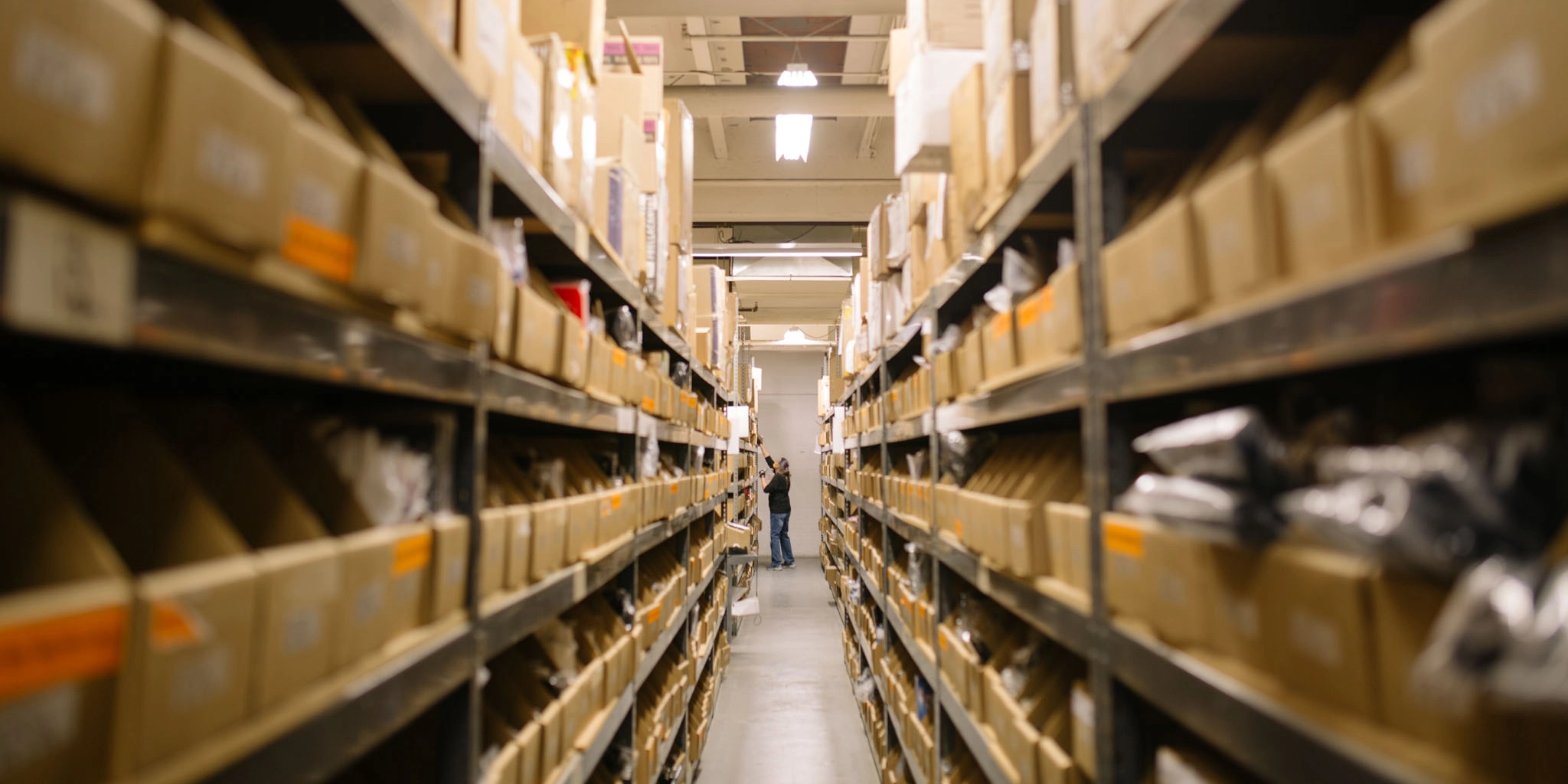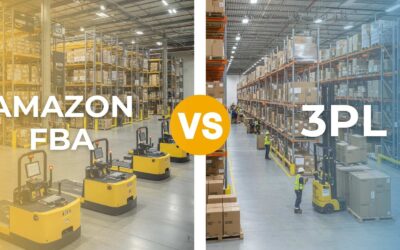
Days Inventory Outstanding (DIO) is the average number of days a company holds its inventory before selling it. In other words, it measures how quickly you’re turning stock into sales and cash. If you’re an online seller, DIO answers the question: On average, how many days does it take for the items you paid for to actually sell and put cash back in your hands? Also known as days sales of inventory or days in inventory, DIO directly impacts your cash flow and inventory costs. Slow moving inventory that sits too long ties up capital and incurs storage fees, while inventory that moves quickly keeps cash flowing and customers happy. In fact, managing DIO well can be the difference between a thriving business and one that’s constantly cash-strapped and struggling to invest in growth.
Jump right in: Days Inventory Outstanding (DIO) Explained
Explaining the Meaning of Days Inventory Outstanding
Understanding Days Inventory Outstanding
What is DIO? DIO tells you the average number of days it takes to sell through your inventory. The formula is:
DIO = (Cost of Goods Sold/Average Inventory) × Days in Period
For example, let’s say you run an online store. Over the past year, you kept an average of $27,000 worth of products in stock (at cost), and your annual cost of goods sold is $243,000.
Using the DIO formula: 27,000/243,000×365 = 40.5 days
That means on average it took about 41 days for you to turn your inventory into a sale. In practical terms, DIO is telling you how long your cash is tied up in inventory before you get it back through sales.

Inventory turnover relationship: DIO is essentially the flip side of inventory turnover. Turnover tells you how many times you sell your inventory in a period, while DIO tells you how many days each “turn” takes.
They are inversely related – a higher turnover means a lower DIO, and vice versa.
For instance, if you have an annual inventory turnover of 9, that implies a DIO of about 365/9 ≈ 40.5 days. (Other metrics like the stock-to-sales ratio similarly gauge inventory against sales, e.g. how many months of stock you have on hand.)
The key point is that DIO puts inventory efficiency in time terms: a smaller DIO generally means you’re cycling through stock quickly, while a larger DIO means inventory stays on shelves longer.
Context matters: What counts as a “good” DIO varies by industry. For example, companies in fast-moving consumer goods may have very low DIO (rapid turnover), whereas those in technology, automobiles, or furniture can afford a higher DIO. As a general benchmark, one analysis found retailers on average hold about 45 days of inventory – but your ideal DIO may be very different based on what you sell. Even within one business, DIO can fluctuate seasonally – it may rise before a holiday rush when inventory is built up, then fall after the peak sales season as stock sells through.
Why DIO Matters for E‑Commerce Sellers

Ever felt like your money is gathering dust in a warehouse, or panicked because you ran out of a hot seller? DIO matters because it directly affects your cash flow and profitability. With a high DIO, your cash is tied up in unsold stock for longer, and you keep paying for storage, insurance, and other holding costs the whole time.
By contrast, a low DIO means you’re converting inventory to cash more quickly and spending less on carrying costs. However, both extremes carry risks.
An excessively high DIO often indicates overstocking – capital trapped in products that aren’t selling – which can lead to write-offs or heavy discounting of obsolete stock. On the other hand, an extremely low DIO might signal that you’re keeping too little inventory, raising the chance of stockouts and missed sales if demand suddenly spikes.
The goal is a healthy balance: enough inventory to meet customer demand promptly, but not so much that it stagnates and drains your resources.
Common Challenges E‑Commerce Sellers Face with DIO
Even savvy sellers find it challenging to maintain an ideal DIO – it’s like trying to hit a moving target blindfolded. Why is that?

If only we had a crystal ball for inventory, but in reality a host of unpredictable factors can throw off your plans:
Unpredictable demand and seasonality: Trends and peak seasons can cause wild swings in sales. One week an item might be barely selling, the next week it’s flying off the shelves – how can you perfectly predict that? If you under-stock and demand spikes unexpectedly, you get stockouts; if you over-stock for a season and sales disappoint, you’re stuck with excess inventory. This unpredictability makes it hard to strike the perfect balance – many sellers either overcompensate (leading to excess stock) or get caught short.
Increased DIO can cause stockouts, increased lead times, angry customers, and potential revenue loss.- the eCommerce Manager
Supply chain delays and disruptions: Global supply issues (production delays, shipping holdups, etc.) can force you to hold extra buffer stock or leave you waiting on inventory. A late shipment can cause stockouts (no product to sell, increasing DIO) followed by a glut of inventory arriving all at once, throwing off your numbers. These issues can result in “stockouts, increased lead times, angry customers, and potential revenue loss”, making it hard to keep inventory flowing steadily.
Lack of real-time inventory visibility: If you don’t have accurate, up-to-date tracking, it’s easy to misjudge stock levels. Inaccurate inventory data leads to over-ordering or under-ordering – either excess stock sitting idle or running out of fast-sellers. Without a central, real-time view, oversights happen (for example, an item might sell out on one channel but still show as available on another).
These mistakes directly impact DIO: too much inventory inflates it, while too little causes stockouts and then sudden surges in DIO when you finally restock heavily.

High warehousing costs and inefficiencies: Storing inventory too long or inefficiently is expensive. Overstocked or disorganized warehouses mean you’re paying for space and handling of items that aren’t selling. It’s like paying rent for products that aren’t earning their keep, and those slow-moving or obsolete stocks also tie up capital. Such inventory wastes space, incurs holding costs, and may eventually need to be liquidated at a loss – all of which drive DIO higher.
Difficulty in forecasting: No forecast is perfect, especially in e-commerce where trends change quickly. Even with lots of data, you’ll occasionally guess wrong. A bad forecast can leave you with surplus inventory or frequent stockouts, harming operations and sales – as “one misstep could lead to either surplus inventory or stockouts”. This challenge underpins all the others: if you can’t predict demand well, maintaining an optimal DIO becomes a constant struggle.
Managing Fulfillment doesn’t have to be a hassle.
Partnering with a 3PL like eFulfillment Service means you can focus on growing your business while we handle the details. Request a Free Quote Today!
How a Fulfillment Service (3PL) Can Help Improve DIO
One way to tackle these challenges is by partnering with a third-party logistics provider (3PL) or fulfillment service. A 3PL specializes in warehousing and shipping, and it can significantly improve your inventory turnover.

Here’s how:
Faster order fulfillment: 3PL fulfillment centers are optimized for speed. They pick, pack, and ship orders quickly, meaning products spend less time sitting in the warehouse once sold. By shipping out orders faster, you reduce the average days an item remains in stock (lowering your DIO). Rapid fulfillment also means happier customers, which can lead to repeat sales – a nice side benefit of efficient inventory turnover.
Real-time inventory tracking: A good 3PL provides technology that lets you see your stock levels in real time. You’ll know exactly how much you have and when to reorder. This visibility and data help prevent overstocking and stockouts by enabling data-driven decisions on inventory. Many 3PL systems even send low-stock alerts, so you can reorder in time to avoid those dreaded “out of stock” periods.
Lower Your DIO with Smarter Fulfillment.
Partner with eFulfillment Service to move inventory faster and free up cash flow. We help eCommerce sellers optimize operations so products don’t sit on shelves. Request a Free Quote today!
Efficient warehousing (with seasonal flexibility): Third-party warehouses are highly efficient in how they store and manage products. 3PLs use optimized layouts and professional staff to handle inventory swiftly and accurately, so goods don’t languish. They also allow scalable storage – you can easily increase or decrease space for seasonal peaks. This means during the holiday season you can hold more stock to meet demand, and scale down afterward, without the inefficiency of owning that extra space year-round. The result is less idle inventory and a more controlled DIO through both busy and slow periods.
Streamlined supply chain & lower costs: 3PLs can streamline your entire logistics process. They often receive products, manage storage, and ship to customers all under one roof, reducing delays between steps. By reducing excess handling and storage time, they help lower your DIO. Moreover, outsourcing to a 3PL can cut costs via economies of scale – e.g. lower shipping rates and shared warehouse resources. With lower logistics costs, you can afford to order inventory more frequently in smaller batches instead of stockpiling, which prevents inventory from building up. A 3PL’s expertise can also help identify slow-moving stock and assist in clearing it out (for example, via promotions or bundles) so it doesn’t continue to inflate your DIO.

For example, a small apparel seller who used to fulfill orders in-house only twice a week switched to a 3PL that shipped orders daily. They no longer needed to hoard as much safety stock, and their DIO dropped from around 50 days to 30 days within a few months. That kind of improvement frees up a lot of cash that used to be stuck on shelves!
In short, a capable fulfillment partner can make your inventory management much more efficient. Products spend less time sitting around, and you can react more flexibly to demand changes. Many e-commerce sellers find that after moving to a 3PL, their inventory turnover improves – meaning a lower DIO and a healthier cash flow. Plus, they also save time and stress on the operational side.
Practical Tips for Sellers to Improve Their DIO
Aside from using a 3PL, there are plenty of steps you can take to optimize your DIO:
Analyzing your inventory data regularly is vital. By proactively monitoring your numbers, you can spot trends and issues early and adjust before they become problems.

Here are some actionable tips:
Use demand forecasting tools: Don’t rely on guesswork. Use software or analytics (your past sales data, Google Trends, seasonality patterns, etc.) to forecast demand as accurately as possible. Good forecasting helps you avoid overstocking due to uncertainty. The more accurately you predict sales, the less excess inventory you’ll need to keep “just in case” – directly lowering your DIO.
Optimize supplier relationships for agility: Work closely with your suppliers to shorten lead times and enable smaller, more frequent replenishments. If you can restock quickly, you don’t have to hoard as much inventory. This ties into just-in-time principles, which we’ll touch on next. Also, consider diversifying your sources or having backup suppliers, so a single delay won’t cripple your inventory flow.
Adopt a just-in-time inventory model (when feasible): Just-in-time (JIT) means scheduling inventory arrivals to coincide closely with when you need to fulfill orders, rather than far in advance. If you can shift toward JIT, you minimize excess stock on hand and significantly cut carrying costs. For instance, rather than buying six months’ worth of a product in one go, you might order smaller batches every few weeks. JIT isn’t always possible (you need very reliable suppliers and demand info), but even moving a little in that direction can noticeably lower your DIO.
Struggling with High Inventory Costs?
Our 3PL services streamline your fulfillment process, helping you lower your Days Inventory Outstanding (DIO) and boost profitability. Get a Free Quote and start improving your cash flow today!
Automate and streamline fulfillment: Delays in fulfilling orders can cause inventory to pile up unnecessarily. Use tools and systems to automate your order processing and inventory updates. Using tools like barcoding and inventory management software can eliminate manual errors and ensure stock counts update instantly. For instance, an integrated system will prevent selling items that aren’t actually in stock and will sync orders to fulfillment in real time. Faster, error-free order processing ensures products move out without delay, which helps keep your DIO in check.
Monitor DIO and adjust regularly: Make DIO a metric you review often (monthly or weekly). If you see it rising, investigate why – maybe a product is moving slower than expected, and you need a promotion to clear it out. If it’s dropping very low, ensure you’re not at risk of stockouts. Continuously tweaking your stock levels and strategies based on DIO trends will improve your responsiveness. (For example, you might set a target range for DIO – say around 45 days ± a small margin – and investigate if it strays far from that range. That might mean running a clearance sale or bundle deal to clear out slow-movers if DIO is too high, or increasing reorder quantities for hot sellers if DIO is trending very low due to stockouts.) Businesses that excel at this kind of inventory optimization can significantly improve service levels and operational efficiency.
By following these tips, you can gradually shorten the time inventory sits unsold. Small improvements – better forecasts, a tighter reorder schedule, automated workflows – add up. Over time, you’ll free up more cash, reduce waste, and run a smoother operation.
Summary:
DIO is a crucial metric for any online seller because it encapsulates how well you manage that fine balance between having enough stock and not having too much. Improving DIO means your cash isn’t unnecessarily tied up on warehouse shelves, and your products are consistently flowing to customers. The key takeaways are to monitor your DIO, use data to drive inventory decisions, and address issues like slow-moving stock or process bottlenecks before they become big problems.
You’ve worked hard to build your business – don’t let inefficient inventory hold it back. Partnering with a fulfillment expert (like eFulfillment Service) can make that journey easier, turning inventory management from a headache into a competitive advantage in the long run. In the end, keeping an eye on DIO will help you ensure your inventory is an asset, not a liability. When your DIO is optimized, you enjoy better cash flow, lower costs, and higher customer satisfaction. So take a moment to assess your own DIO. Are there things you could do to turn stock into sales faster? Chances are, with the strategies discussed above – and possibly some help from fulfillment experts – you can start bringing that DIO number down. A lower DIO means a more agile, profitable business – and that’s a goal worth striving for.
Take the Next Step: Stop Letting Inventory Chaos Hold You Back
You built your business to sell products, not wrestle with logistics. If tracking stock, managing fulfillment, and keeping up with demand are taking over your time, it’s time to make a change.
💡 eFulfillment Service specializes in helping eCommerce businesses scale without the headaches. Whether you’re managing one SKU or a few thousand, we provide the technology, automation, and expertise to keep your operations running smoothly.
📞 Ready to simplify your fulfillment and focus on growth? Contact us today to see how we can help streamline your operations and improve efficiency.
Need help with fulfillment? eFulfillment Service specializes in flexible, multi-channel fulfillment, including Amazon FBA prep services. Contact us today for a free quote and see how we can streamline your operations!





0 Comments